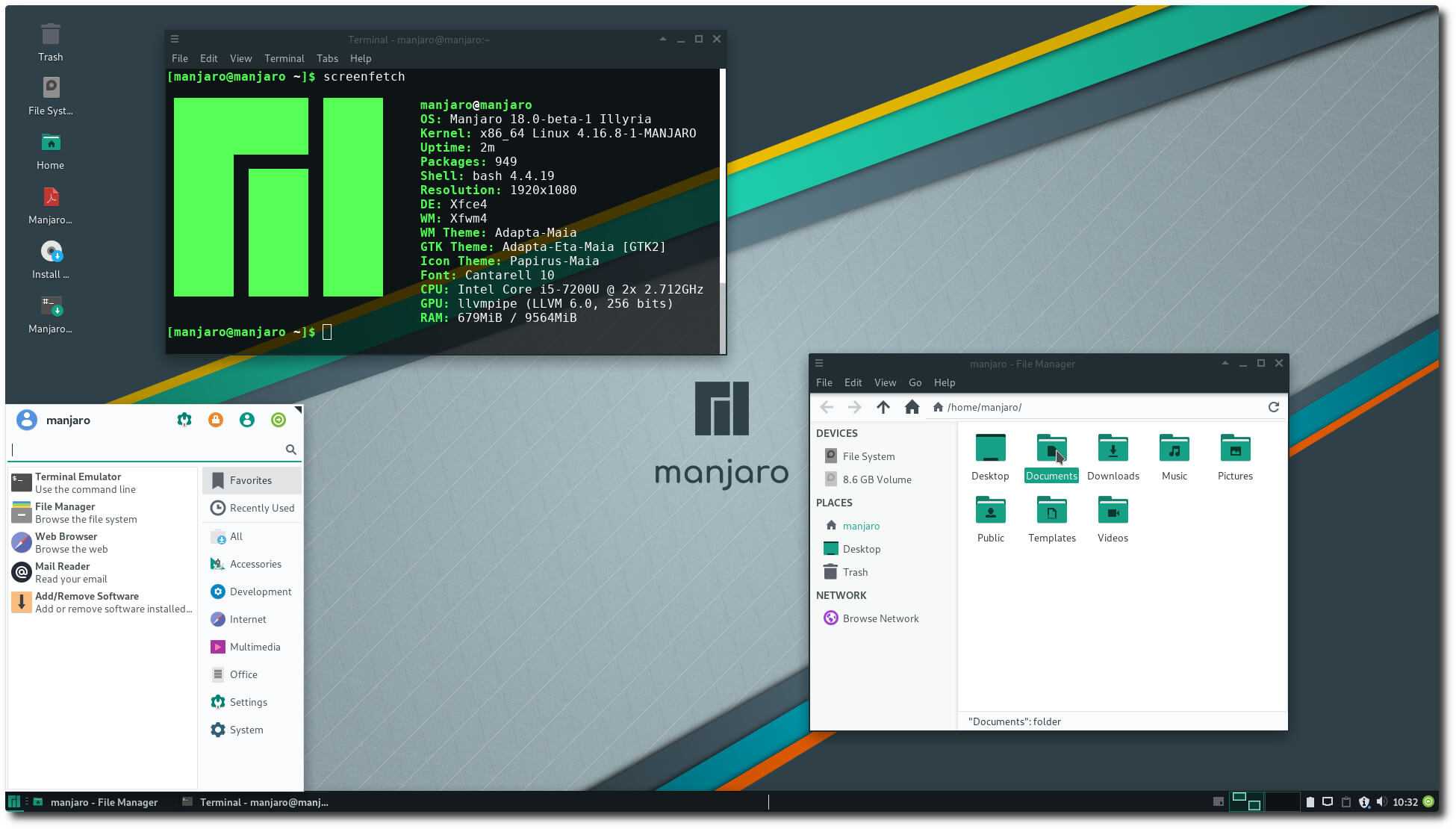

- #Manjaro tigervnc how to#
- #Manjaro tigervnc install#
- #Manjaro tigervnc manual#
- #Manjaro tigervnc for windows 10#
- #Manjaro tigervnc password#
To make this new user the default user of Arch, run this in CMD: LxRunOffline su -n Arch -v 1000 Here, uncomment the line that says %wheel ALL=(ALL) ALL, save and exit the editor.Įxit Arch. Run the following to create a user username and give it a password: useradd -m -G wheel username
#Manjaro tigervnc install#
After that, we will install the basic utilities and a terminal text editor: pacman-key -init Uncomment the three worldwide mirrors (or the ones based on your location). To add to the problem, the package manager pacman wouldn't run because all the mirrors in '/etc/pacman.d/mirrorlist' are commented by default, and we don't even have a text editor to uncomment them! To fix this, we just open it in notepad (life hack!): notepad.exe /etc/pacman.d/mirrorlist Now the rootfs we downloaded was an absolute minimal install, and includes nothing by default. The second line runs the Arch distribution (the '~' tells it to open in the default home directory). We don't want that, so the first line fixes that. This can take a bit of time.Īfter that, run: wsl -set-version Arch 2 wsl ~ -d Archīy default, Arch is installed as an instance of WSL1. Also, make sure the path doesn't have any spaces (Linux doesn't like spaces). Instead of 'D:\WSL\Arch', you can specify any location path. Once the download is complete, we can instruct LxRunOffline to start the extraction: mkdir D:\WSL\Arch LxRunOffline i -n Arch -d D:\WSL\Arch\ -f %USERPROFILE% \Downloads\archlinux-bootstrap -2020. In CMD, run: cd %USERPROFILE% \Downloads curl -LO 2020. Here, for example, it copies this to 'C:\Windows' (this is why elevated access is required).

The last line copies the LxRunOffline.exe file to a location which is included in PATH environment variable, so that we can call this from anywhere. 0 -msvc.zip powershell -c Expand-Archive LxRunOffline-v3. Open up Administrator CMD and run the following commands: cd %USERPROFILE% \Downloads curl -LO. We will use a tool called LxRunOffline to install and manage WSLs on our system.
#Manjaro tigervnc how to#
Follow the steps given in this short guide How to Setup | ArchWSL Documentation. Not to worry though, since both Arch Linux and the WSL kernel are open source, you can just easily install it manually too.

Installing Arch Linux - Method IĪrch Linux used to be an official app on the Windows Store some time ago, but the Arch community isn't onboard with the concept of WSL, or they aren't exactly comfortable with how easy WSL makes Linux installations for Windows users. Now, there are two ways to install Arch - the first one is extremely easy and preferable, and the second is for those who like to have more fine-grain control over stuff. Everything is explained in great detail in the guide.
#Manjaro tigervnc manual#
Make sure you follow till step 5 of the manual method to have WSL2 as default.
#Manjaro tigervnc for windows 10#
Enabling Windows Subsystem for Linuxįollow this official guide - Windows Subsystem for Linux Installation Guide for Windows 10 - to enable WSL on Windows. But entirely possible, and surprisingly usable.
#Manjaro tigervnc password#
Input the password created earlier (ignore the warning as we are using an encrypted connection) and you will see the remote system - which could just be a Raspberry Pi sitting next to you on the desk.Setting up Arch Linux with KDE Plasma in Windows Subsystem for Linux 2 Then launch the VNC viewer and input the following connection details and click connect Open a ssh connection using port mapping ssh -L 9902:localhost:5902 SSH provides a secure channel and using key based authentication is the recommended method. Install the package tigervnc Connect to target system Start a vncserver at the selected display systemctl enable the device reboot :2 - which in turn will correspond to port 5902 - replace $USERNAME with the user you just created the password for. openbox) session=$SESSIONĮdit /etc/tigervnc/ers and append e.g. List the available sessions ls /usr/share/xsessionsĬreate the file /home/$USERNAME/.vnc/config with content ( replace $SESSION according to your installation e.g. Replace the phrase $USERNAME with the username of the actual user you want to configure. On the system to be controlled install package tigervnc VNC passwordĬreate a password for your login vncpasswd The benefit of using SSH is that you can easily adapt this to target any remote server without sacrificing security.

NOTE: The setup is not implementing any VNC encryption so SSH will be used to establish the connection. This document is from my notepad and a real-world implementation of the document(s) found at Archlinux Wiki - TigerVNC. VNC is a protocol where you use your keyboard/mouse/screen to monitor or control a remote system.


 0 kommentar(er)
0 kommentar(er)
